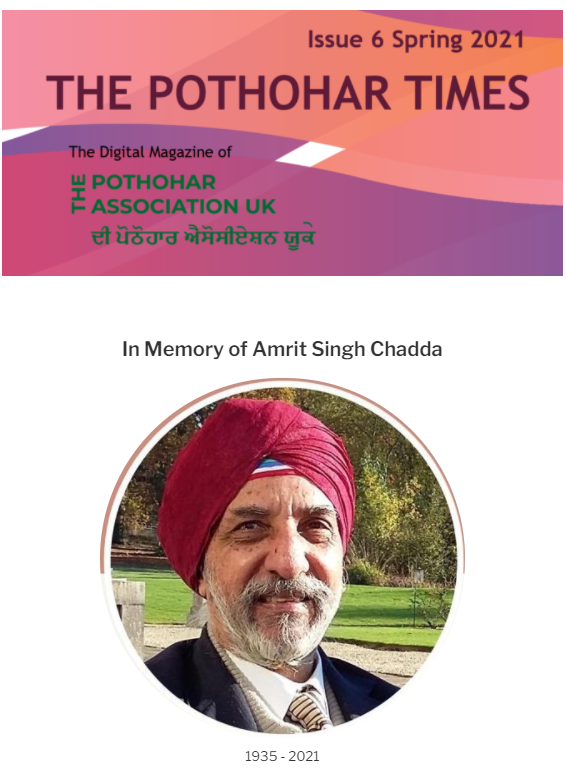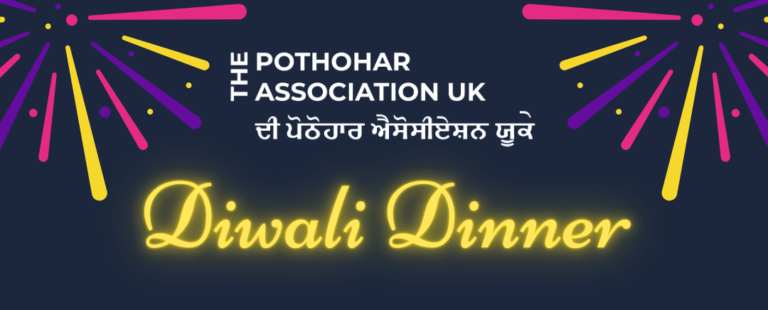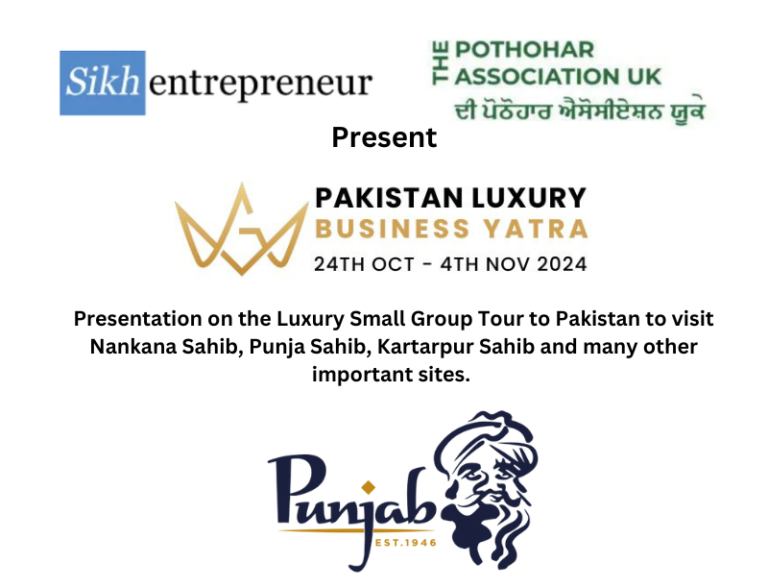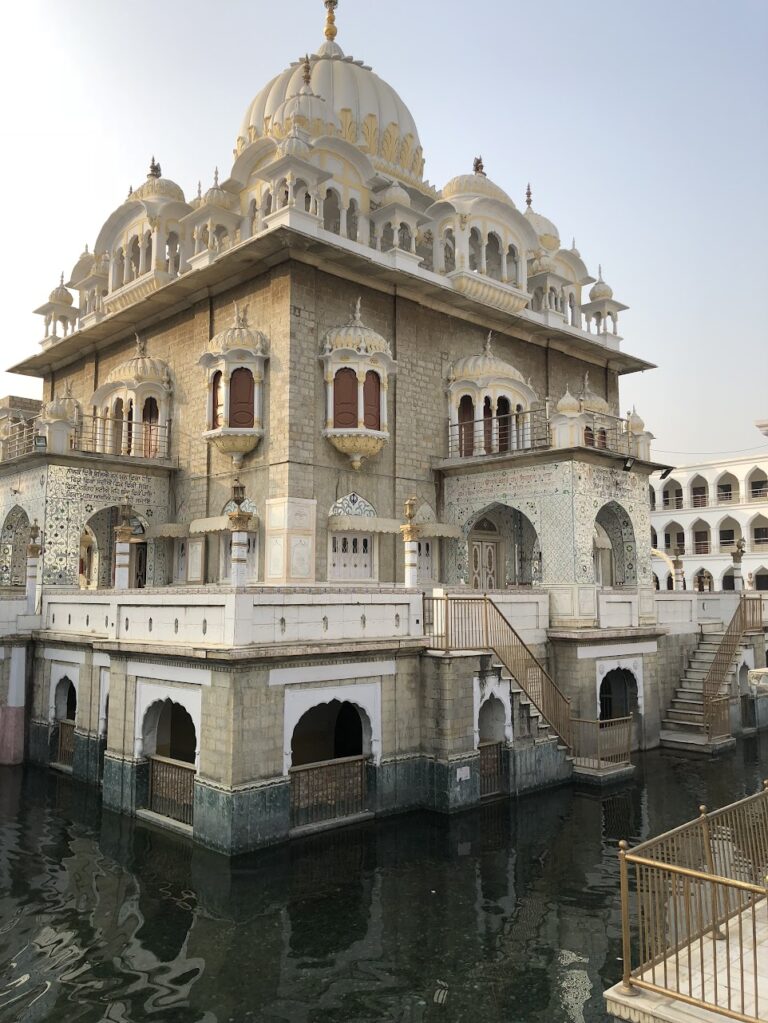In Memory of Amrit Singh Chadda
CONTENTS
Tributes and Obituary to Amrit Chadda
Feeding the Disadvantaged
Pothohar Di Dunya Jagjit Kaur Goel
Coronavirus Vaccine. Have you had your Jab? Bhupinder S Bhasin
Census. Your chance to be Counted Sushil Choudrie
Pothoharis in the Spotlight: Gulzar Tejinder Singh Chandhyoke
UK Parliament Debates the Farmers Protest
Sikh Courier and Dr Kapoor’s books Now Available Online
Pothohar Association Tree in Pinner
10 Things You Need to Know About Osteoarthritis of the Hip Mr Mandeep Lamba
Pothohari Kitchen – Jagjeet Kaur Goel
Tale of Two Pothohari Centenarians
Poem: A Fragment of my Heart Ritu
Stanford University Study recognizes a Pothohari
Book Review
Tributes to Amrit Chadda
Sardar Amrit Chadda was a true Pothohari who contributed so much to The Pothohar Association UK.
We know from Gurbani ,
Assa Vee Othe Vanjana Subb Muklavan Haar
His time of Muklava came and sure enough he is on a new journey to meet his Master, Waheguru ji
I am also reminded of another quote from Guru Granth Sahib ji
Datey Daat Rakhi Hath Apne, Jiss Bhave so Dawey
Amrit was the chosen one who served Pothohar Association for over 27 years. He was instrumental in steering the association to what we are today. He served in various positions and always challenging to get the best for the Association.
I have a both honour & pleasure of working very closely with him over the past six years .When due to Covid-19 we switched to online meetings, although he found the technology bit challenging like all of us but he quickly adopted and was at ease with Zoom. He was meticulous with paper work. He was happy and gave support to the proposal of taking this organisation to an incorporated status. I credit him due to his foresight of modernising the organisation. We know Amrit is not with us but his legacy will live for ever.
Chanchal Singh Chowdhry
President, Pothohar Association
Amrit was a noble soul who led his life by the ideals of our Sikh Gurus. I have never come across anyone who had any bad words for him. He was an epitome of kindness and generosity. His children Rupi and Surbjit reflect their patients qualities of humility and kindness. Amrit ji dedicated his life in the service of the community and the Pothohar Association. He once honoured me when he was the President and this demonstrates his greatness of acknowledging and accepting others. We pray to Wahe Guru Ji to grant him a place in heaven. He will be greatly missed.
Lord (Rami) Ranger of Mayfair
Our beloved Amrit departed too early and suddenly . Amrit means nectar which really means loved by all. He was a nice person and had no enemies. He lived by Gurbani
Na Koye Bairee Na Baigana , Sagal Sangh Hum Ko Bunn Ayee
He will be remembered for his good work and was respected all over the world.
Lord Suri of Ealing
Sardar Amrit Singh was my Jeejaji, married to my Cousin sister Mrs Kulwant Kaur (Guddan Benji). Jeejaji was a noble, honest and sincere person. He held the Pothohar Association together. A particular memory I will always remember about him: In 1968, when we went to stay with them in Enfield. When Jeejaji came back from work he used like his Whiskey and he told me that he enjoys an Omelette with his drink. He will be Dearly Missed by the Family and the Association.
Harmeet Suri
Vice President Pothohar Association
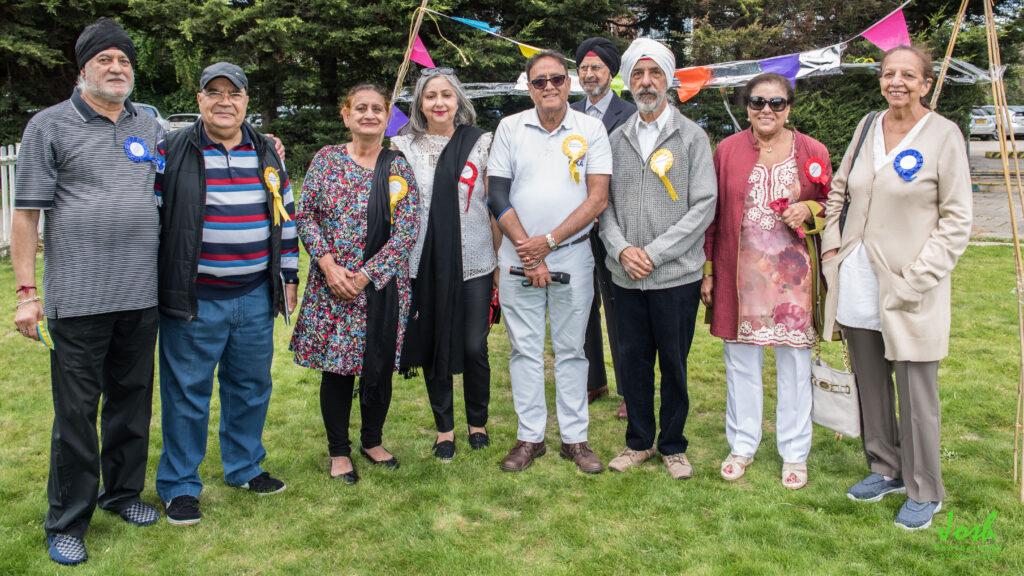
Mr Amrit Singh Chadha was an inspiring man both within the community and our Association. His commitment to this cause has always been second to none and it was always a pleasure to be in his presence. I thank him for all his contributions and our thoughts go out to his family for this big loss. May he rest in peace.
Meharban Singh Mehta
Public Relations Officer
Amrit Chadda As I Knew Him
I remember meeting Amrit in 1998 and soon after that I discovered he is my Mamaji and that’s the relation I always had with him and his family. I joined The Pothohar Association and became an executive member shortly afterwards. He was a disciplined man, dressed immaculately always and conducted the meetings very fairly. He was a good listener, and a fair auditor…taking everyone’s opinions on board before taking a decision. I would call him a Master of all trades. A legend.
It was always a challenge to challenge him! In my life, I have not met a person so devout and knowledgeable. He was a charitable man… and a much organised being. In fact he organised many a trip, picnic and functions on a large scale not just for the Association… but also his own personal charitable causes.
I came to learn myself over the years, he was a strict but fair human being. At times, we disagreed in Executive Committee Meetings, and when on the rare occasion we did… he would call me the next day to pacify me. I found him very professional, and knew if we disagreed it was only because he had the best interest of the Association at heart. I was astounded to learn, that he kept all records of the Association manually over the years. For his age, he had good knowledge of technology and was extremely efficient in sending out email and Association related documents. He always kept us on our toes.
He brought together all Asian Communities, regardless of religion. He held many functions to form a solidarity amongst the cultures. This was a great initiative and one he held a lot of pride for.
The most heartfelt moments were when he coming out to support me at the polling stations for my local elections, sitting for hours on end in the cold, and handing out leaflets in my support. He did so from the bottom of his own heart.
Sardar Amrit Singh Chadda was a legend. Lets keep his legacy going.
Jasbir Kaur Anand
Immediate Past President
Obituary
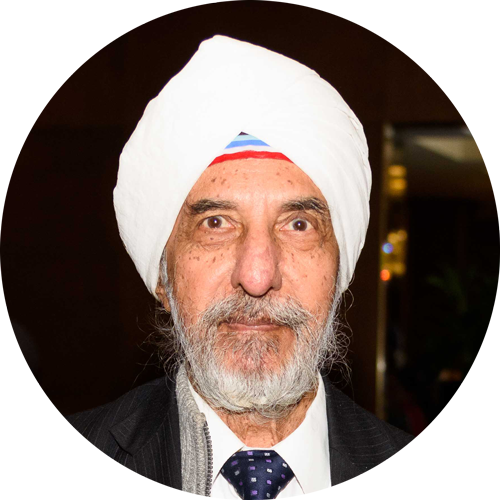
Sardar Amrit Singh Chadda ( 1935-2021)
Amrit was born in Dar-es-Salaam, Tanzania in East Africa on 7 October 1935. His father, Mr Diwan Singh & mother Avtar Kaur were both from District Rawalpindi . His father was popularly known as Masterji because of his senior position in Masonic circle.
Mr Diwan Singh was highly educated and was involved with community work and social activities. Life style of his father must have a great influence in his early character building for future.
In school he excelled in athletics, scouts, drama and the debating society. He achieved seven O levels and regularly won numerous medals in sports. He was a keen hockey player and was selected to play in East African annual games in Nairobi.
Amrit migrated to London in 1960 & worked as a Telecommunication Engineer. Following his father he continued higher education on a day release & gained an honours degree in Electrical Engineering. After marrying Kulwant Kaur ( niece of Lord Suri ) in 1964 they moved to Enfield.
Amrit took keen interest in the education of his two children and was invited to join school governors where he influenced the school policies. As a devoted Sikh he regularly attended the Sikh Gurdwara in Edmonton, North London and was instrumental in buying a building in Souhtgate which is now known as Gurdwara Nanak Darbar North London. He served in the Executive Committee of the Gurudwara for several years.
Throughout his life he devoted his spare time by helping others which included handling correspondence with immigrations officers on behalf of villagers from India & Pakistan. His roles and activities were very diverse and many of the social events and assistance were from his own initiatives and inspiration with a view to helping the whole community . He would also take up various cases of racial discrimination. Whilst helping these individuals Amrit would give advice and assist in drafting letters to the relevant authority or employer. During these activities Amrit met with officers of the Enfield Racial Equality Council (EREC) to ask for their advice on these matters. He also founded Tanzanian Friends Association in 1993 and served its President ever since.
Amrit served The Pothohar Association UK for over 27 years in various capacities joining as an Executive member in 1993 , General Secretary 1997 to 2000; Vice President 2001 to 2004; Treasurer 2005 to 2007; President 2008 to 2013; Immediate Past President and then again as a Treasurer. He also served in Building Committee as Secretary and treasurer from its inception till present. He was a leading torch bearer of The Pothohar Association and shall be missed by all.
Amrit is survived his wife Kulwant (fondly known as Gudan) by a son, daughter and two grandchildren.
Feeding the Disadvantaged
Over the last few months the Pothohar Association raised some funds to help to provide hot meals to the most disadvantaged in society. We are working with London’s Community Kitchen, One Kind Act and Central Gurdwara London (Shepherds Bush) to provide the meals to the needy.
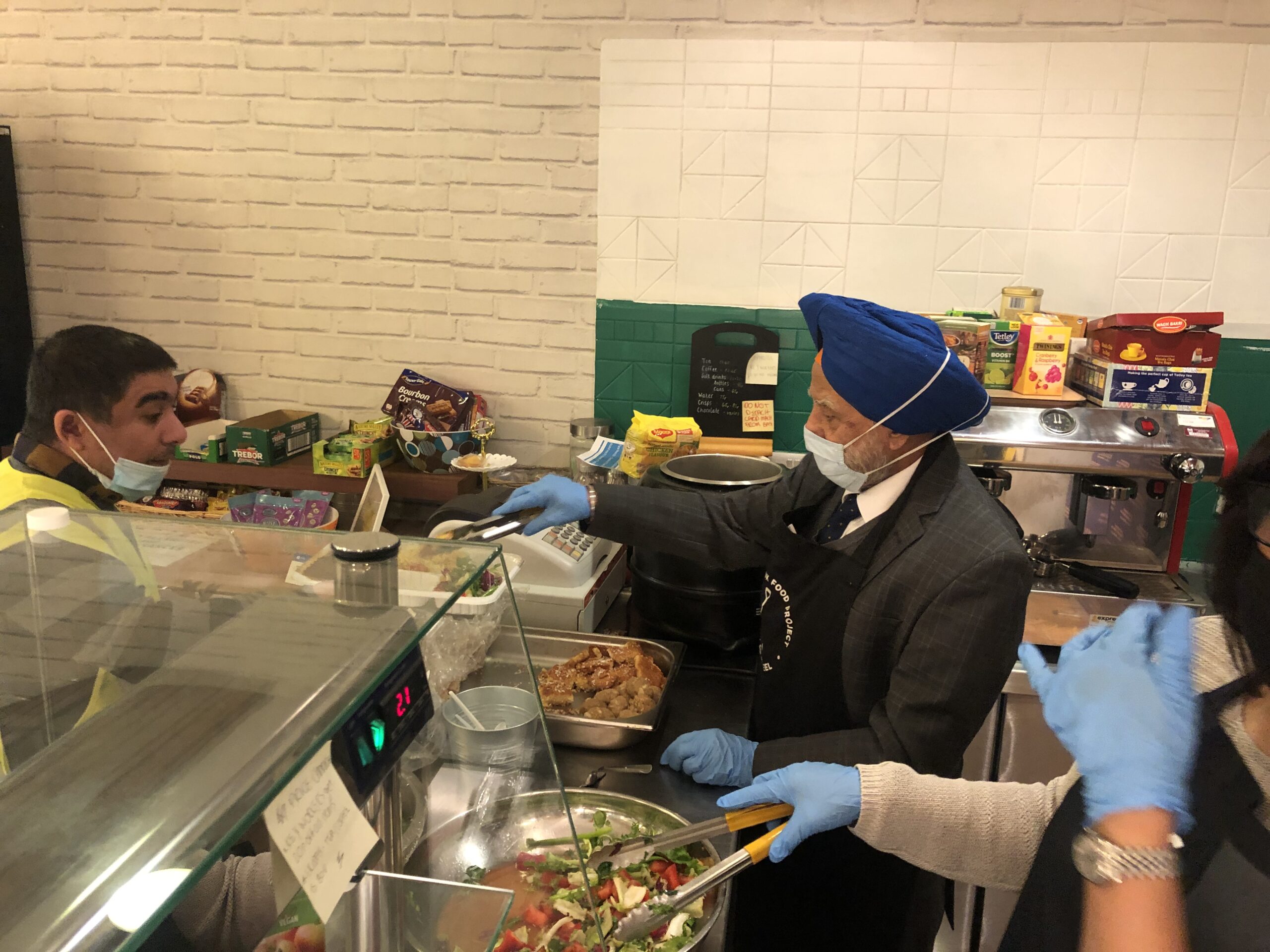
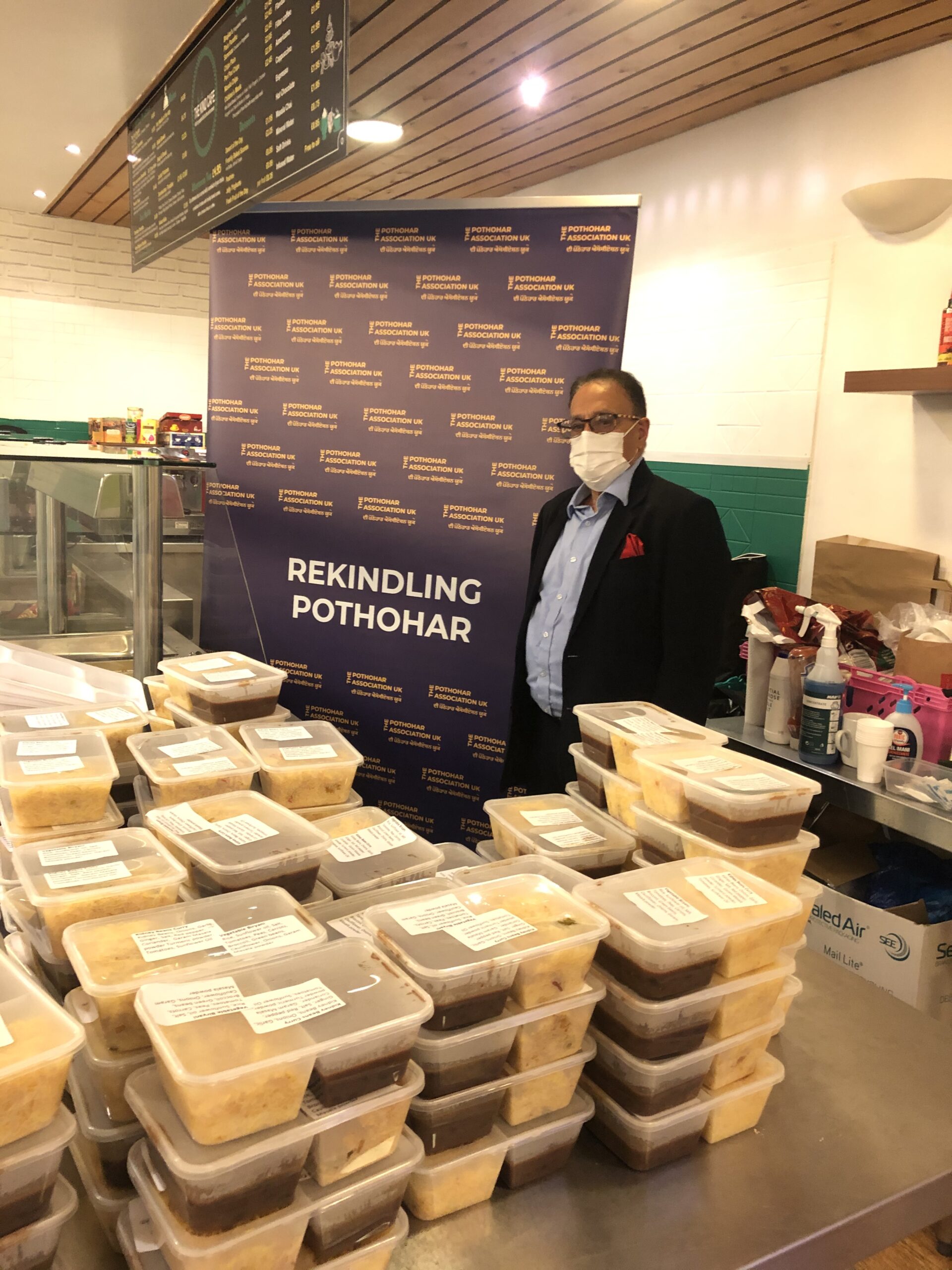
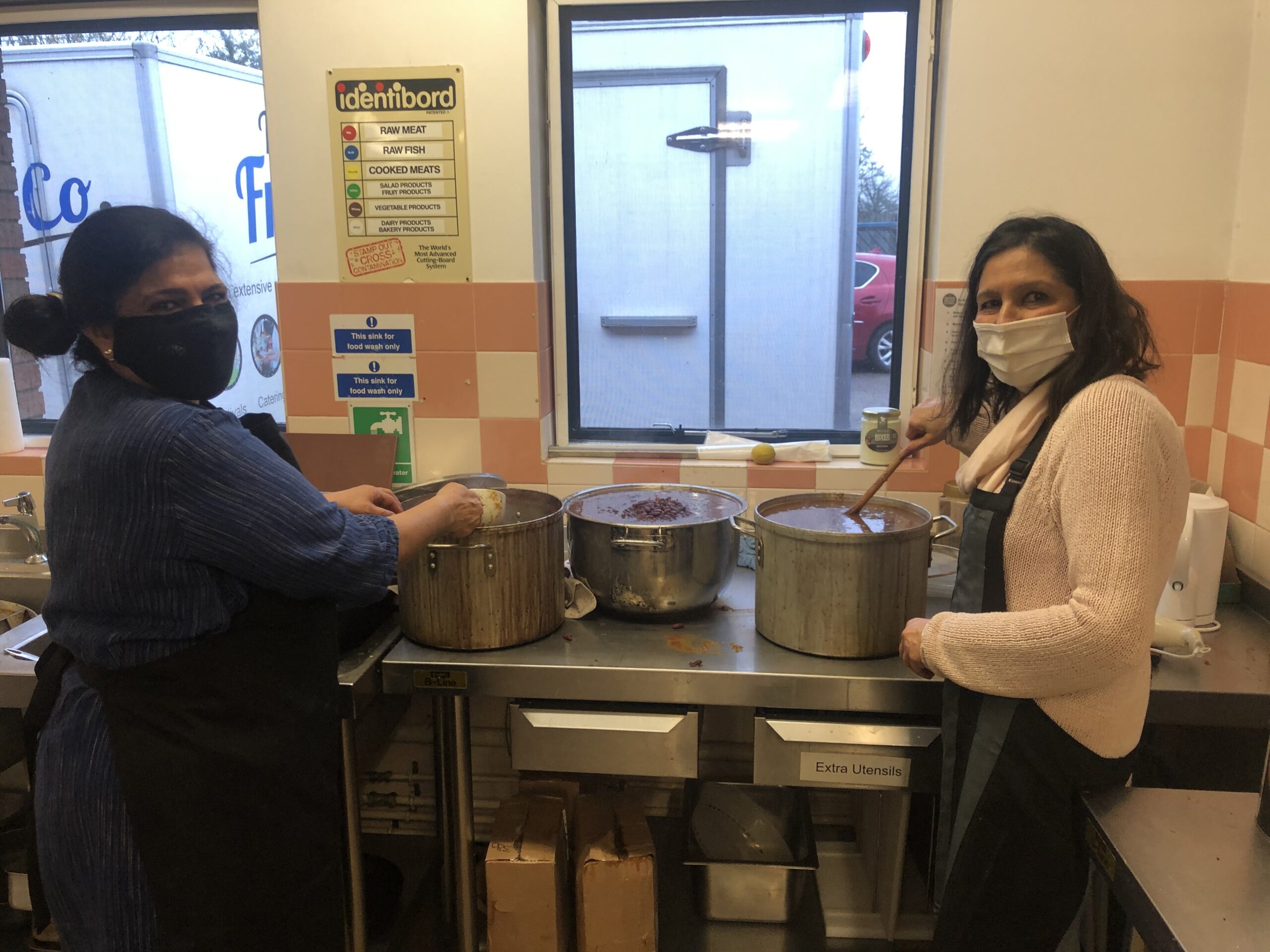

The project started on 18 December when Chanchal Singh Chowdhry offered to supply food to cook Langer for volunteers and the disadvantaged. A handful of volunteers gathered at the Harrow headquarters of London’s Community Kitchen (LCK) to cook Raajama Chawal. Enough food was cooked for the volunteers to have lunch and then 250 pre packed hot meals were prepared and packed into bags along with some fruit and home made cakes. These were then distributed by LCK.
Every Friday and Saturday hundreds of people visit the LCK centres in Harrow and in Brent to collect food and other essential items donated by various organisations from supermarkets, voluntary and faith groups. We are glad to be helping with this valuable service.

It was then decided that PA should raise some money to provide support on an on-going basis. However, as the UK went back into lockdown, it became clear that we could not gather together to cook the food in the LCK kitchen. We then partnered with Central Gurdwara London (Shepherds Bush) who cook and supply meals on a daily basis to several food banks and voluntary organisations.
The fundraising drive was so successful that PA has committed to supplying meals once a week for the rest of the year.
We are also now delivering 30 hot meals every week to the volunteers at the Harrow Covid Vaccination Centre.
POTHOHAR DI DUNIYA
Jagjit Kaur Goel
History records that the Aryans entered India through its northwest border. The Aryans arrival was in the Pothohar region. Their initial work on the Vedas started in the Pothohar region. Next came the Mughal invaders. They followed the same route as the Aryans and landed in Pothohar. Aryans brought Sanskrit and Mughals brought the Persian language. Over time the Pothohari language became much influenced by both these languages and we find Sanskrit and Persian words in the Pothohari language. The sweetness of spoken Pothohari definitely comes from Sanskrit.
The spoken language of people, especially the proverbs and maxims used, often tells us a lot about them, their characteristics and personality. The Pothohari proverbs show us that the Pothohari were intelligent, thoughtful, easy going and fun loving people.
Here is a collection of Pothohari proverbs
ਸੋ ਕਾਮੇ ਇਕ ਅਹਾਰੀ
so kame ik ahari
There is only one leader among hundreds of workers
ਸੁਕਾ ਤਕੀ ਲੜੀ ਨਾ ਮੋਟਾ ਤਕੀ ਡਰੀ ਨਾਂ
suka taki larri na mota taki dari na
dont pick up fight with a weak looking person and dont be scared of a fat looking person
ਕੰਮ ਅਪੜਣਾ ਤੈ ਸ਼ੋਭਾ ਲੋਕਾਂ ਨੀ
kam aprrna taye shoba lokan ni
when you complete some work properly people praise you
automatically , no need to ask for appreciation
ਲੰਮੇ ਬੰਦੇ ਨੀ ਅਕਲ ਗਿਟਿਆਾਂ ਵਿੱਚ ਹੋਣੀ
lame bande ni akal gitian vich honi
usually a tall person has his brain in his heels meaning he is foolish, height does not guarantee wisdom
ਮਰਾਸੀਆਂ ਨਾਂ ਪੁਤਰ ਰੋਸੀ ਵੀ ਸੁਰੈੈ ਵਿਚ
marasian na putar rosi vi suray vich
one always behave the way he is used to for example an educated person does not forget his ethics and etiquettes even in a fight
ਗਲ ਵੇਲੇ ਨੀ ਤੈੈ ਫ਼ਲ ਮੌਸਮ ਨਾ
gal vele ni tay fal mosam na
Speak at the right time then the result is good like fruit which ripens at the right time only
ਨਾ ਚਾਚਾ ਆਇਆ ਤੈੈ ਨਾ ਚਾਚਾ ਗਿਐ
na chacha ayea na chacha giaye
Nothing changed
ਹਾਥੀ ਲੰਘੀ ਗਿਐ ਪੂਛ ਰਹੀ ਗਹੀ
hathi langi giaye poochh rehi geyi
Main work has been done only a bit is left
ਫ਼ੁਲਾਂ ਨਾਲ ਕੰਡੋ ਵੀ ਹੋਣੇ
fulan nal kande vi hone
Success come after hard work
ਨਾਂ ਗਾਂ ਨਾ ਬਛੀ ਨੀਂਦਰ ਅਛੀ
Na gan na bachhi neender achhi
With less wealth you have more peace of mind and happy
ਗਲ ਪਿਆ ਢੋਲ ਵਜਾਣਾ ਪੈਣਾਂ
gal piaye thol vjana pehna
sometimes you have to do some work even though it is not your responsibility
ਪੁਤਰਾਂ ਨਾ ਰਾਜ ਮੁਥਾਜ ਹੋਣਾ
putran na raj muthaj hona
Economically independent son makes his parents feel dependent on him
Hope you enjoyed reading these proverbs I will bring some more in the next issue.
Coronavirus Vaccine. Have you had your Jab?
Bhupinder Singh Bhasin
On 30 January 2021 the Pothohar Association (PA) held a lively online seminar on the Coronavirus Vaccines featuring contributions from three prominent Doctors: Dr Pooja Dassan; Dr Harmandeep Singh Bhatia; and Dr Gurjinder Singh Sandhu.
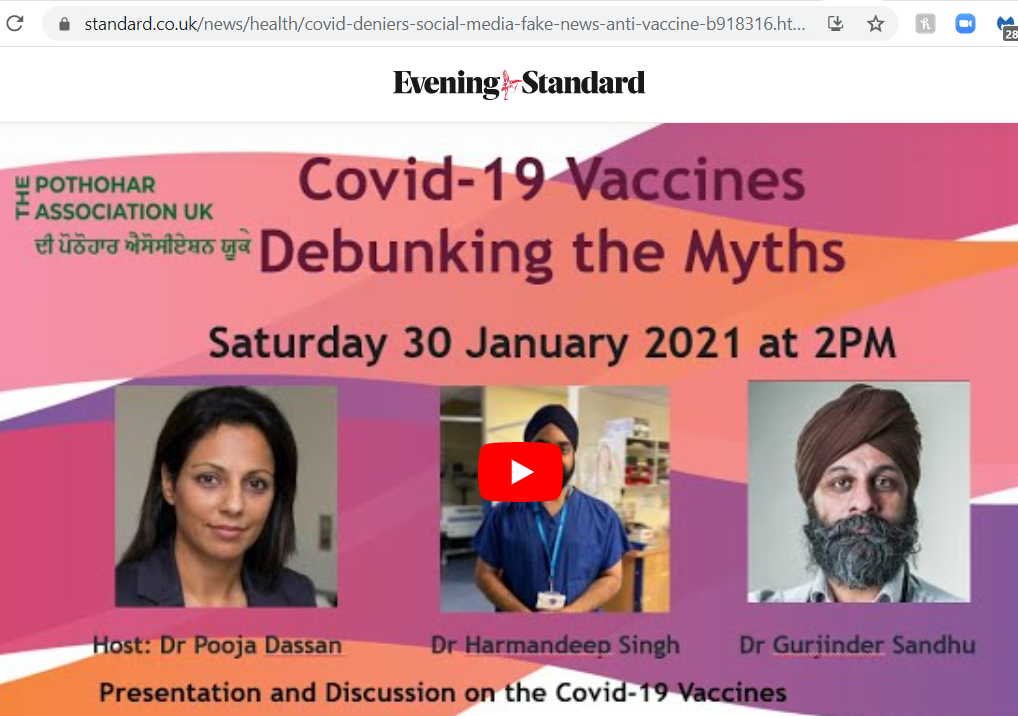
The presentation was mentioned in the Evening Standard newspaper which highlighted the comments of the doctors.
Dr Harmandeep Singh said, “What we are seeing is a harsh reality, the brutal reality of covid in hospitals… We are seeing young people die in front of our eyes”… “It makes me angry when I see people not following the rules and disbelieving in covid, saying that it doesn’t exist.”
Dr Gurjinder Sandhu, an infectious diseases consultant explained the importance of taking the Vaccine. He reminded the viewers of the sacrifice of Guru HarKrishan Ji who helped small pox sufferers. Small Pox has been eradicated from the World today thanks to the Vaccine that was developed in 1958 and administered all around the world. Many other infectious diseases have been effectively combatted by vaccination programmes over the years.
Coronavirus will also be eradicated as long as we all take the vaccine to protect ourselves and our loved ones.
The PA has received a small grant to help promote the vaccine in our community. If you wish to help in this endeavour please contact the General Secretary: [email protected]
Why you should take the Vaccine
Dr Harpreet S Kohli MPH, FFPH, FRCP (Glasg). Retired Director of Public Health
The basic premise of any vaccine is to boost the immunity of people to help prevent serious illness, hospitalisation and death from COVID-19. The vaccines approved have been fully assessed by the MHRA as being safe and effective from trial results. The results from mass
vaccination programmes now underway confirm the trial results. But for the vaccination programme to be successful, it requires people to accept the vaccine in large enough numbers. This is true for the general population in the UK but more so for those from minority ethnic groups including people of Indian heritage because of the higher risk of infection from SARS-CoV-2 and death from COVID-19.
The vaccine is the best way to protect yourself from COVID-19 and I would urge you to
get the vaccine when you are offered it by the NHS. By doing so you will be protecting not only yourself but also those close to you. And here’s the thing about vaccines, they protect individuals who have been vaccinated but if a large enough proportion of the population get vaccinated we will be close to achieving “herd immunity”.
Whilst there can be some minor adverse effects after getting the vaccine such as tenderness at the injection site or feeling tired, the benefits of getting the vaccine are huge. And it doesn’t matter which vaccine you get, they are all safe and effective. Given the higher risk of people of Indian heritage being infected and dying from COVID-19, as a public health doctor I would strongly urge you to get the vaccine when you are offered it on the NHS to protect yourself, your family, and the community.
Census. Your chance to be Counted
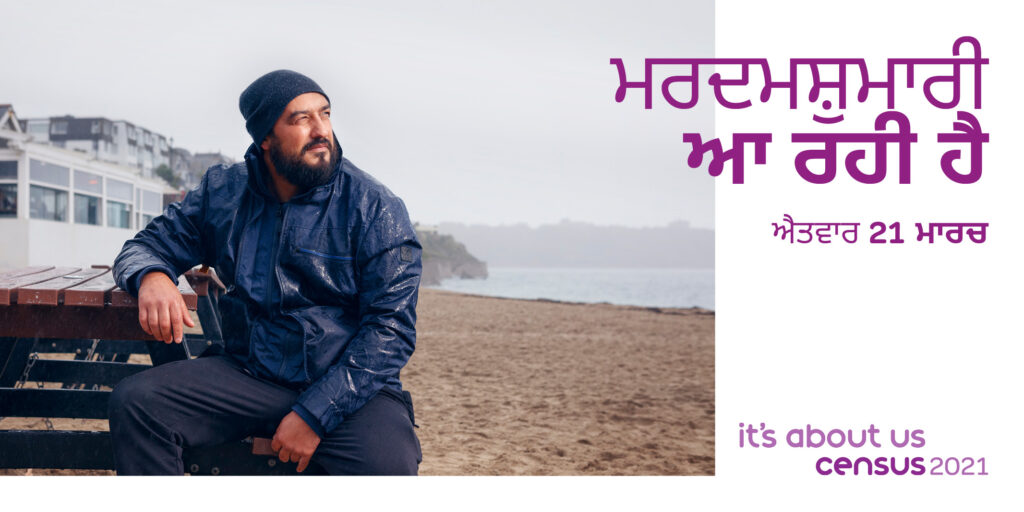
On 17 February PA organised a zoom seminar on the Census. Seema Malhotra MP; Virendra Sharma MP and Sushil Choudrie from the ONS explained the importance of completing the Census form. You should have received a letter with your access code by now. This years Census can be filled in online. However, if you prefer a hard copy form please request a form: https://census.gov.uk/en/request/paper-questionnaire/enter-address/
or call 0800 141 2021
The census informs decisions about the things that matter to your community. You must complete the census by law. Census data helps inform funding decisions on public services in your area. Whether it’s planning new schools or doctors’ surgeries.
Census Day is Sunday 21 March – but you can fill yours in as soon as you get your access code in the post. Your answers should be about the people who usually live in your household on this date even if you’re filling it in before then.
The form will take about 10-15 minutes per person to fill. You will ahve to answer the questions for all the people in your household. Each person can fill in their own form if they prefer.
In our seminar it was stressed that everyone complete the voluntary Religion question accurately. There is also a question on your main language. For example if you speak Punjabi at home it was stressed that you choose “other” and write in Punjabi. The next question asks how well you speak English.
FAQs
Will the government use the information I share to identify me? No. The Office for National Statistics (ONS) is independent from Government. Only anonymous information from the census is published. In fact, it’s a crime to share personal census information and anything you tell us is protected.
How will the census make a difference to me? The census makes a difference to everyone. It’s a once-in-a-decade chance to have your voice heard and help inform the future of your local area.
What if I do not identify with the census options? The census asks you about your ethnicity, gender and sexual orientation, religion and national identity. It’s up to you to decide how you would like to answer each question. Do it in the way that you feel best represents you.
Could information I share affect my benefits or immigration status? No. The information you share in the census cannot be used to influence benefit claims or a residency application, immigration status or your taxes. The ONS is independent from government. This means officials dealing with payments or services you receive cannot see your census information.
If you are having any difficulty there are a wide range of support services:
• guidance and support in many languages and formats
• help over the phone, in a web chat or on social media
• a paper version of the questionnaire, if you prefer
• accessible census guidance, for example, in braille
Watch the recording of the seminar
Pothoharis in the Spotlight: Gulzar
Tejinder Singh Chandhyoke
In continuation to my previous article with regard to the renowned Pothoharis who have continued to enrich/excel with their work and inspire us all, I have my next guest in this series who is a unique legend with a career of more than six decades, Bollywood lyricist-writer-filmmaker “Gulzar” who has gifted us with some of the most sensitive films, and unforgettable songs and poems.

Gulzar was born on 18th August 1934 in a Khatri Sikh family as Sampooran Singh Kalra, to Makhan Singh Kalra and Sujan Kaur, in Dina, Jhelum District, British India (present-day Pakistan). In school, he had read translations of the works of Rabindra Nath Tagore which he recounted as one of his life’s many turning points.
Post Partition, his family moved to Delhi. He attended the St. Stephen’s college in Delhi after which his father sent him to Mumbai (Bombay) to make a career for himself. He started taking up small jobs in Mumbai to make a living including a mechanic at a garage and painting accident damaged cars.
He began writing under the pen name Gulzar Deenvi later changed to “Gulzar” and got associated with PWA (Progressive Writers Association). At PWA, Gulzar got in touch with Shailendra and Bimal Roy who encouraged him to join films. His book “Ravi Paar” has a narrative of Bimal Roy and the agony of creation. In films, he found an environment associated with literature in the group he worked with, including Bimal Roy, most of whose films were based on literary works.
Gulzar describes Ahmad Nadeem Qasmi the Pakistani poet as his “mentor and guru.”
Gulzar began his film career as a songwriter with music maestro SD Burman for Bandini (1963), starring Nutan, Dharmendra and Ashok Kumar. Shailendra, who has penned the rest of the songs in the movie requested Gulzar to write the song “Mora Gora Ang Layle”, sung by Lata Mangeshkar.

Gulzar’s breakthrough came in 1969 film Khamoshi. Its song “Humne Dekhi Hai Un Aankhon Ki Mehekti Khushboo” sung by Lata Mangeshkar went on to become a classic. Gulzar’s song “Humko Man Ki Shakti Dena” from Guddi in 1971 remains an integral part of school prayers even to this day.
Gulzar got married to Rakhee Gulzar on May 15th 1973. The couple has a daughter named Meghna Gulzar (Bosky) who is a film director, producer and writer.
Gulzar worked with music composers across generations, including RD Burman, SD Burman, Shankar Jaikishan, Hemant Kumar, Laxmikant-Pyarelal, Madan Mohan, Rajesh Roshan, Anu Malik, Vishal Bhardwaj, AR Rahman and Shankar–Ehsaan–Loy.
Gulzar’s poetry is primarily in Urdu and Punjabi, apart from several Hindi dialects. His poems are published in three compilations – Chand Pukhraaj Ka, Raat Pashminey Ki and Pandrah Paanch Pachattar. He has even written many short stories.
As a director, Gulzar has helmed a handful of award-winning movies like Mere Apne, Parichay, Koshish, Achanak, Aandhi, Khushboo, Mausam, Angoor, Maachis and Hu Tu Tu.
Gulzar also directed Naseeruddin Shah’s TV show Mirza Ghalib for Doordarshan and Tahreer Munshi Premchand Ki. Gulzar has also written lyrics and dialogues for Doordarshan TV shows including Jungle Book, Alice in Wonderland and Potli Baba Ki.
Gulzar – Jagjit was a magic combination of poet-singer and worked wonders both on and off stage.
Gulzar has won 5 National Film Awards and 21 Filmfare Awards. Slumdog Millionaire’s song “Jai Ho” got him an Academy Award for Best Original Song and a Grammy Award. Gulzar received the Padma Bhushan in 2004, and Dadasaheb Phalke Award in 2013.
In April 2013 Gulzar was appointed as the chancellor of the Assam University.
In the words of Gulzar, “Ghalib” is very important for everyone. You should know about him even if you are not familiar with his language. His poems, his lifestyle, his behaviour everything is a great inspiration. At a time when people used to carry their religion on their shoulders, Ghalib talked about humanity. The man lost seven children and carried a huge sadness inside him but despite that he was known for his sense of humour.
According to Gulzar, writing is a full-time job. In an erstwhile interview to HT he said, “When writers say that they need to ‘set the mood’ or ‘get into the zone’, those are all ways to procrastinate. Not prerequisites.”
The writer and creative powerhouse also draws inspiration from the Space. He shares that NASA is his favourite website, “the universe with its abstract nature attracts me. The abstract element in my poetry comes from there. I often write about the moon, and more often than not, it is to symbolise a person, or a quality.”
Having spent decades writing in various forms in the Hindi film industry, publishing books and directing movies, it is the power of his pen that continues to keep everyone mesmerised.
We as Pothoharis feel honoured and privileged to have a legend making his name in the film industry with his unmatched contribution and wish him continued success.
UK Parliament Debates the Farmers Protest
On 8 March 2021 Parliament debated the Indian Farmers protest at a virtual Westminster Hall. MPs from all major parties took part. The Debate was in response to a Parliamentary Petition: “Urge the Indian Government to ensure safety of protestors & press freedom”. Over 115,000 people had signed the online petition. It is very important that this debate has been recorded in the Parliamentary Record, Hansard. Read the transcript.
Watch the Debate: https://www.youtube.com/watch?v=vN12tu6cndg
The Debate was presented by Martyn Day MP of the Scottish National Party. While the debate was around urging the Indian Government to ensure the safety of peaceful protestors MPs heard a comprehensive account of the reasons for the largest protest in the World, the controversial Farm Laws being introduced by the Indian Government.
The Pothohar Association held a zoom seminar in December 2020 explaining the Farm Laws and the the way forward. Watch now on YouTube.
Sikh Courier and Dr Kapoor’s books Now Available Online
New Website for The Sikh Courier is available at: www.sikhcourierintl.org.uk
Dr Sukhbir Singh Kapoor, the Vice Chancellor of the World Sikh University has written many books on the Sikh faith and now many of the books are available online free of charge
www.sikhstudies.club
Pothohar Association Tree in Pinner
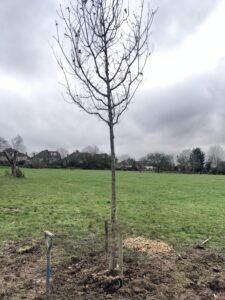
On 10 December 2020 an Oak Tree was planted on behalf of the Pothohar Association in Pinner Village Garden. The Tree has been planed in honour of Guru Nanak. As it was planted during the pandemic only a few people could attend and help in the planting. As soon as it is safe to do so we plan to have a special event in the park to unveil a plaque.
The planting was done in association with Harrow Sikhs who also planted an Oak Tree. Once fully grown the pair of trees will provide a beautiful and fitting tribute to Guru Nanak.
10 Things You Need to Know About Osteoarthritis of the Hip
Mr Mandeep Lamba
Hip osteoarthritis explained
Arthritis is one of the most common causes of hip pain. When you have arthritis in your hip, it essentially means the cartilage in the hip has worn away. A condition that develops over time, hip osteoarthritis causes the hip joint to become stiff and painful, which can result in difficulty walking and even a limp which can get worse after exercise or physical activity. It’s often assumed that arthritis only affects older individuals, but this isn’t true. You could reach the age of 100 without having hip osteoarthritis – the condition is mostly related to the shape and condition of your hip.
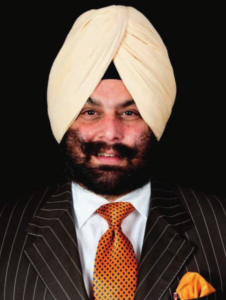
The treatment options
Initial treatment usually involves having painkillers and anti inflammatory medication, physiotherapy and the use of a walking aid. Other treatments include a targeted injection of steroid and a local anaesthetic under ultrasound or X-ray guidance. In a few select cases a hip arthroscopy (keyhole surgery) may be recommended. If a patient exhausts these treatment options and still experiences pain, a hip replacement may be recommended. For many patients, a replacement is the most effective solution.
Hip replacements
A hip replacement is a common type of surgery with approximately 80,000 operations performed each year in the UK. The surgery usually takes one hour to perform. You may have a general anaesthetic where you will be unconscious or a spinal injection that will make you numb from the waist down. The operation involves making an incision to access and remove your damaged hip joint, which is replaced with an artificial hip joint. This is then closed with stiches or skin clips.
The benefits

A new hip joint can provide pain relief, improved functionality and the ability to undertake ordinary activities and exercise. Overall, the procedure dramatically improves a patient’s quality of life.
Resuming normal activities
Each patient may have different recovery rates based on their age and physical condition. Hospital staff will help you to get up and walk as quickly as possible after surgery. Some patients are even able to walk the same day as the procedure. You will need to follow a programme of rehabilitation and you will be taught exercises to help strengthen your hip. Generally, you should be able to stop using your crutches within six weeks and be able to perform all your normal activities within three months.
POTHOHARI KITCHEN
Jagjit Kaur Goel
TURMERIC – HALDI

A bit of history
Turmeric, HALDI, is the root of a flowering plant which is bright yellow-orange in colour. Turmeric has been used in Asia for centuries and it is a major constituent of Aurvedic and Chinese medicine. Initially it was used as a dye to colour the robes of monks and Hindu priests. Over time its medicinal values were discovered and it became a norm in folk medicine. From India, the qualities of turmeric spread to South East Asia along with Hinduism and Buddhism. Residues of turmeric, ginger and garlic have been found near Delhi dating back to 2500 BC. Turmeric was also discovered in the Pacific islands of Hawaii and Tahiti.
There are many medicinal benefits of turmeric. It is anti-inflammatory, antioxidant, a natural antibiotic. it is used in treatment of ulcers, cholesterol ,rheumatism , to lower blood pressure etc. This magic spice is also used as a face mask for a glowing skin and for reducing acne and dark circles under the eyes.
How do we use this golden spice?
Include it in your daily diet, add to your cooked food and in drinks, smoothies, Chutneys and pickles
Drinks
Haldi Dhood(milk)
For broken bones, cold, tiredness and depression
Ingredients
1 cup milk, 1tsp turmeric, ¼ tsp black pepper, 1 tsp honey.
Put milk in a saucepan over gentle heat, add all the ingredients and keep on stirring the milk and bring it to boil, remove it from heat and drink it warm
Do stir the milk while drinking the milk, as turmeric does not dissolve completely.
Option substitute soya milk for cow milk
Turmeric Chai (tea)
Ingredients
1 cup water, 1tp haldi, pinch of black pepper, ½ tsp cinnamon powder, 1tsp honey and 1 level tsp of ginger paste.

Boil water in a saucepan, add all the ingredients stir and bring to boil. Reduce heat and let it simmer for a few minutes until there is a pleasant aroma.
Remove from heat and serve
You will experience immediate comfort and vitality in your body
Smoothie
Choose any fruit to your taste, add banana and some lemon juice add1/2 tsp of haldi to the fruit in the mixer and grind till smooth
Juice
100 ml orange juice, 100 ml grapefruit juice 1 small banana, 1 tsp ginger paste and 1/2tsp of haldi.
Put the ingredients in a juicer to mix well and serve
Chutney
100 gms fresh haldi and 50 gms of fresh ginger and 4 chillies cut into small pieces, 6 garlic cloves 1 tbsp of fresh lemon juice salt to taste and 1 tbsp of honey.
Put all the ingredients in a grinder and grind. Add water if necessary, a little at a time, since it should be of thick consistency.
You can store it in a fridge it goes well with vegetarian meals parathas, daal-roti etc.
Serve it regularly it builds up your immunity.
Face masks
For centuries haldi has been used to get a glowing skin ,to get rid of acne and black circles under the eyes

Method
Prepare a paste mixing 1 tsp haldi, 1 tsp honey and 1 tbsp fresh yoghurt and a bit of olive oil. Apply evenly on your face leave it on for about 20 minutes until it gets dry
Then wash your face with cool water and pat dry
IMPORTANT
Allergy test
Apply the turmeric paste on a small skin patch to make sure that there is no allergic reactions and that your skin is not stained yellow
REFERENCE TURMERIC Role of hyper trichosis and acne
Indian JOURNAL OF DEMATOLOGY, 201 VOL 52
SAG DESI, SAG VALAATI
We all love sag; sag and maki di roti is a favourite of Punjabis without exception
I have tried a new recipe to cook sag. I call it VALAATI SAG using the local grown greens; the result is fantastic.
The taste is gentle and creamy which tickles your TONGUE AND YOU SWOON WITH HUNGER
RECIPE
Ingredients
200 gms English green, 200 gms spinach, 200 gms kale 100 gms white cabbage,20 gms of ginger, 8 pods of garlic 2 chillies ,one lump of fine corn flour(optional)1/2 tsp of haldi , 1 small onion 1 tbsp jeera and salt to taste,3 tbsp of olive oil and some butter to put on the prepared dish.
Method
Wash and cut the English green, kale, spinach and the cabbage.
Cut the onion into tiny pieces leave aside.
Pressure cook the vegetables after, two whistles remove from heat, and leave aside to cool down then open the lid. Add the cornflour, mix it well and grind the sag with a hand grinder. Return to medium heat for 5 minutes (keep the pan covered as the sag splutters), then reduce the heat and keep on low heat for further 5 minutes.
In the meantime, in a frying pan add a spoonful of ghee and shallow fry onions and garlic. When the onions turn golden, transfer to the sag mix and cover well with the lid. When you serve put some butter on top.
Valaati sag is ready to be relished.
Enjoy the sag and the turmeric (haldi) until next time, when I shall bring to you another exotic food.
Tale of Two Pothohari Centenarians
Two persons born in Dist. Rawalpindi (now part of Pakistan) in cricketing terms are still at the crease and batting for a long magnificent inning. Both the Pothoharis living in two different continents have one thing in common, both are living with their loving families and being looked very well.

Sardar Gurbachan Singh Gujral, now living in Hounslow was born in Rawalpindi on 23rd Feb 1921 to parents Sardar Dhian Singh Gujral and Dhropadi. It is worth noting in those days most of girls were named from Hindu mythology.
Gurbachan moved to Kenya at the age of 16 and came back after nine years to marry Sardarni Satwant Kaur. They have three daughters and a son. He worked in Railways in Mombasa, East Africa and took an early retirement and went back to India in 1965 initially lived in Jaipur and then moved to Chandigarh. He migrated to U.K. in 1974 and worked for pension department till his retirement. His daughter Mrs Amarjit Kaur Bhatia and son in law Kulwant proudly shared greetings from Her Majesty the Queen.
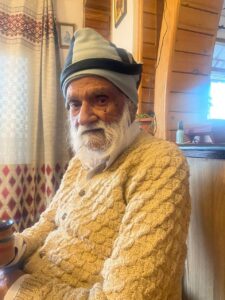
Our second centenarian is Sardar Harbans Singh who moved from Rawalpindi to Shimla in 1946 and retired as Under Secretary In the Ministry of Finance in Himachal Pardesh. Shimla back in 1946 was part of greater Punjab and was summer capital during British Raj. For past 75 years he has been residing in Shimla and that makes him the oldest living resident of this prominent hill station. At the age of 102 he is still an ardent reader, leads a much disciplined life and recites Gurbani every day. He married his namesake Harbans and had three sons and one daughter.
Pothohar Association wish both the gentlemen a happy and long innings.
Poem: A fragment of my Heart
Ritu
Somewhere she remains
A fragment of my heart
Taken and stored
Hidden away
For when we meet again
The seasons remain unchanged
Without your gentle smile
The flowers grow
But fail to brighten the day
The pain eases with time
It’s definitely true
But somewhere she remains
A fragment of my heart
Taken and stored
Hidden away
For when we meet again
Stanford University Study recognizes a Pothohari Dr.Swaranjit Singh for his research in Biotechnology
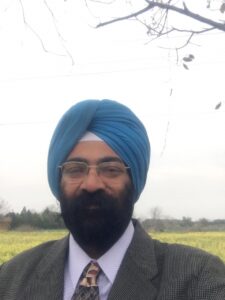
Dr Swaranjit Singh was listed for his work in CSIR-NEIST Jorhat and CSIR-IMTECH in the Top 2% of Scientists of the world, ranked by a Stanford University study. He was given this global recognition in the field of Biotechnology.
Dr.Swaranjit did his Post Doctorate from the Pennsylvania State University USA and also studied in Kobe University Japan and Karlsruhe Institute of Technology Germany. He is a Fellow of Association of Microbiologist , National Environmental Science Academy , Society of Applied Biotechnology , National Academy of Biological Sciences, Member World Federation of Culture Collections & Member National Academy of Sciences.
Dr Swaranjit Singh ( son of Mr Darshan Singh Cameotra and Dr. Amarjit Kaur) is well recognised in the field of Biotechnology. The Pothohar Association UK is proud of such talented professionals amongst us.
Book Review
Erotic Stories for Punjabi Widows by Balli Kaur Jaswal
Review by Momina Aijazuddin (originally printed in the Friday Times, Pakistan)
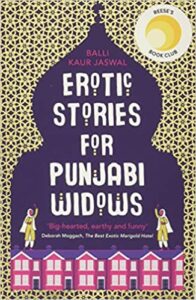
I love the part in South Asian movies where instead of showing the consummation of a love scene, it cuts to flowers blowing in the breeze or to spectacular sunsets. Privacy in the East is best left to the imagination.
This is certainly not the case in Balli Kaur Jaswal’s novel Erotic Stories for Punjabi Widows. It has received much hype in the Reese Witherspoon book club – the Good Housekeeping seal of approval for potential screenplays in the US. Witherspoon is the actress who has been credited with transmuting many books onto the screen, including the critically acclaimed movie adaption Little Fires Everywhere.
This novel has all the makings of a coming of age masala potboiler. It describes how Nikki comes to terms with her Sikh heritage, coping with the push and pull of being a second-generation immigrant in London, and the contradictions inherent in life in multi-racial England. She ends up working and living in a pub, much to the consternation of her mother and sister. In addition, she offers to teach English lessons at the local community Sikh gurdwara in Southhall. There, she teaches a haggle of middle-aged women, many of whom don’t know how to read or write, let alone the sophistication of creative story telling.
And this is where the novel becomes interesting, for these women have imaginations wilder than the humdrum lives they are leading. The book contains a hilarious set of stories being orally told as the women opt for creative story-telling which they can then document. These are passed around among the group, and then these stories find their way into the local community, livening up the personal lives of many of the residents.
One often thinks of middle age as an invisible period. Even the women own up to it: they discuss sex or other issues as though they were comparing the price of vegetables. And where else can one see stories based on the juiciness of aubergines or the multifaceted purpose of ghee in securing marital bliss?
It makes one think differently of these women. They have longings, desires and imagination as much as men. But if one only sees them through the prism of their outward appearances – provincial, backward, suppressed by society and their hierarchical structures – one misses out on their other dimensions.
For Nikki, the ability to see these women as being able to give voice to their long suppressed emotions and longings is an eye-opening experience. It helps her own dimension of self-identity. She realizes that being modern does not mean that one has to discard one’s history, values and cultural system. One can embrace certain facets of modernity without being regarded as ‘shameless’.
The biggest fallacy she debunks is that modern girls are ‘fast’ and that conservative ones are ‘good’. That takeaway alone is very important – that one should not be guided by others, or their view of what it means to be Sikh (or Muslim for that matter), or a girl, or what the societal values are.
Nikki’s story is like so many coming-of-age tales in real life. Her father is gravely disappointed that she drops out of law school and decides to pursue another direction. His subsequent death in the story gives her a sense of lack of closure. What if she had continued with law school and then her father would not have planned the trip to India and died of a heart attack?
Imagining other realities could be fodder to exercise our fantasy or make-believe worlds. And the widows in this novel are liberated – first by fantasy, and then in turn by their bravery when fantasy refuels their alternate lives. They re- imagine themselves in their make-believe worlds – by speaking of taboo topics whether lesbian relationships with their sisters in law, regaining power in their marriage (with a little bit of help from ghee). Though they hide between the walls of sobriety and conservative behavior, their inner authenticity is given a voice.
They relate to their younger modern teacher with empathy and a sense of protection. The aspect of frustration of their humdrum everyday lives gives way to a much deeper world beneath – of self-awareness, deception, even murder. In one episode, one of the ladies, upon reading the stories, looks at her husband with a startlingly new vision. She discovers in their relationship that it is possible to find humour and passion and the sense of possibility, despite the death of their daughter.
Perhaps the gender stereotyping one has grown up with has conditioned us unduly. Even in our local TV dramas, it is much easier to talk about violence, child marriage and rape than it is about passion and sexuality. We fall victim to that. We are embarrassed at seeing actors kissing in Bollywood films, but accept similar (if not worse intimacy and explicitness) in Hollywood movies.
Jaswal’s thought-provoking novel is a 21st-century guide for desi aunties who want to use an aubergine for other than cooking the husband’s lunch.

